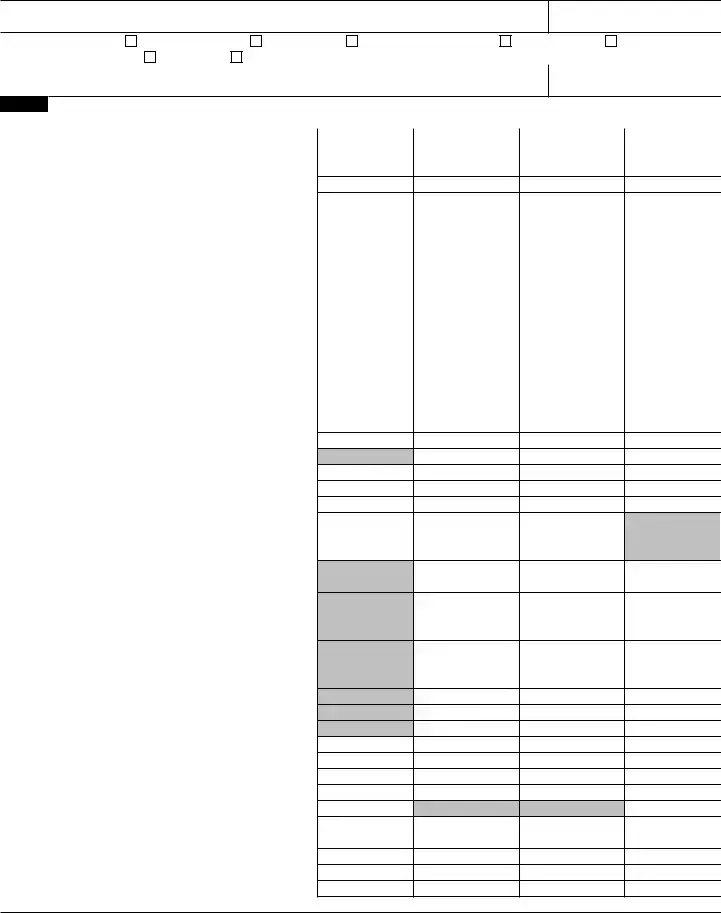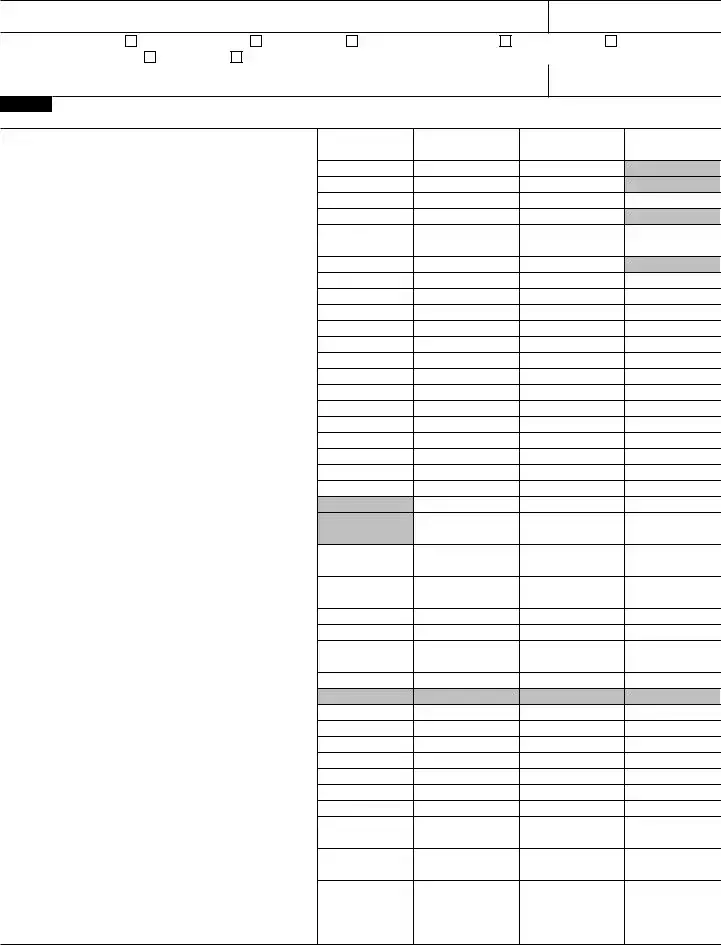Check applicable box(es): (1) |
Consolidated group |
(2) |
Parent corp |
(3) |
Consolidated eliminations |
(4) |
Subsidiary corp (5) |
Mixed 1120/L/PC group |
Check if a sub-consolidated: (6) |
1120 group (7) |
1120 eliminations |
|
|
|
|
|
|
|
|
|
|
|
|
Name of subsidiary (if consolidated return) |
|
|
|
|
|
Employer identification number |
Part II Reconciliation of Net Income (Loss) per Income Statement of Includible Corporations With Taxable Income per Return (see instructions)
Income (Loss) Items |
(a) |
(b) |
(c) |
(d) |
Income (Loss) per |
Temporary |
Permanent |
Income (Loss) |
(Attach statements for lines 1 through 12) |
Income Statement |
Difference |
Difference |
per Tax Return |
1 Income (loss) from equity method foreign corporations |
|
|
|
|
2Gross foreign dividends not previously taxed . . .
3 |
Subpart F, QEF, and similar income inclusions . . |
|
|
|
|
|
4 |
Gross-up for foreign taxes deemed paid . . . . |
|
|
|
|
|
5 |
Gross foreign distributions previously taxed . . . |
|
|
|
|
6 |
Income (loss) from equity method U.S. corporations |
|
|
|
|
7 |
U.S. dividends not eliminated in tax consolidation . |
|
|
|
|
8 |
Minority interest for includible corporations . . . |
|
|
|
|
9 |
Income (loss) from U.S. partnerships |
|
|
|
|
10 |
Income (loss) from foreign partnerships . . . . |
|
|
|
|
11 |
Income (loss) from other pass-through entities . . |
|
|
|
|
12 |
Items relating to reportable transactions . . . . |
|
|
|
|
13 |
Interest income (see instructions) |
|
|
|
|
14 |
Total accrual to cash adjustment |
|
|
|
|
15 |
Hedging transactions |
|
|
|
|
16 |
Mark-to-market income (loss) |
|
|
|
|
17 |
Cost of goods sold (see instructions) . . . . . ( |
) |
( |
) |
18Sale versus lease (for sellers and/or lessors) . . .
19 |
Section 481(a) adjustments |
20 |
Unearned/deferred revenue |
21 |
Income recognition from long-term contracts . . |
22Original issue discount and other imputed interest .
23a Income statement gain/loss on sale, exchange, abandonment, worthlessness, or other disposition of assets other than inventory and pass-through entities
b Gross capital gains from Schedule D, excluding amounts from pass-through entities . . . . . .
c Gross capital losses from Schedule D, excluding amounts from pass-through entities, abandonment losses, and worthless stock losses . . . . . .
d Net gain/loss reported on Form 4797, line 17, excluding amounts from pass-through entities, abandonment losses, and worthless stock losses .
e Abandonment losses . . . . . . . . . .
f Worthless stock losses (attach statement) . . . .
g Other gain/loss on disposition of assets other than inventory
24Capital loss limitation and carryforward used . . . 
25Other income (loss) items with differences (attach statement)
26Total income (loss) items. Combine lines 1 through 25
27Total expense/deduction items (from Part III, line 39)
28 Other items with no differences . . . . . . .
29a Mixed groups, see instructions. All others, combine lines 26 through 28 . . . . . . . . . . .
b PC insurance subgroup reconciliation totals . . .
c Life insurance subgroup reconciliation totals . . .
30Reconciliation totals. Combine lines 29a through 29c
Note: Line 30, column (a), must equal Part I, line 11, and column (d) must equal Form 1120, page 1, line 28.
















 No.
No.


 No.
No.
 Yes.
Yes.

